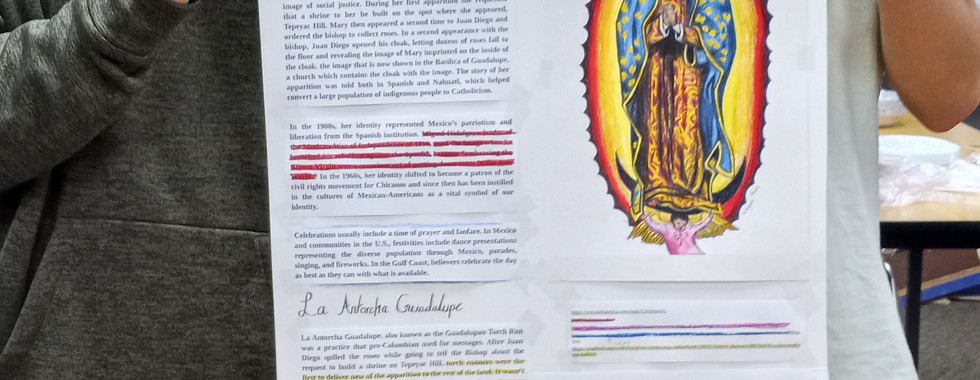Spanish II Students Celebrate Christmas...and it's Delicious!
- Kingsley Area Schools

- Dec 21, 2022
- 2 min read
By Kingsley High School Spanish teacher Maria Suomi
Feliz Navidad!
This month, Spanish II students spent some time discovering how Christmas is celebrated in Spanish-speaking countries and sharing their newfound expertise.
Mexican chocolate, rosca de reyes, ensalada de Nochebuena, tamales, ponche and buñuelos are all traditional holiday items. The cinnamon hot chocolate, whose recipe dates from the time of the Aztecs, was served in class with buñuelos, a deep-fried doughnut-like pastry.
Ensalada de nochebuena was a lovely salad of various fruits usually served on Christmas Eve or Day. A fruity ponche is often served to adults as well. This might be on Christmas Eve or during the end of las posadas, a singing re-enactment of Mary and Joseph’s search for lodging and one of Mexico’s most important Christmas customs.
Traditionally, Mexicans do not receive gifts from Santa, (although that is changing a bit now,) but from the Three Kings. These gifts are received, appropriately enough, not on December 25 but on January 6, Three Kings Day. This is the day when legend says that the Christ child received his gifts from the Magi. Children leave out clean and well-polished shoes with food or straw for the Kings’ camels. On el dia de los reyes magos, their shoes will be filled with small gifts and treats.
Other gifts may be found near the nacimiento. During this time the family will gather to share a rosca, a ring-shaped sweetbread whose shape and glacé fruit decoration represent a crown studded with gems.

Somewhere in the rosca, a small figurine of a Christ child is hidden. The person who receives this figurine in his piece is considered the “godparent” of Jesus and is responsible for hosting the last fiesta of the season on Candelaria, February 2.
This will be a large family celebration with lots of wonderful pork or beef tamales. These are “packages” of meat and corn meal with spices that are placed into corn husks, tied, and steamed.
Student projects included cookbooks with photos and recipes explaining each dish made.
---
To learn more about Spanish II, email msuomi@kingsleyschools.org
.png)





































Comments